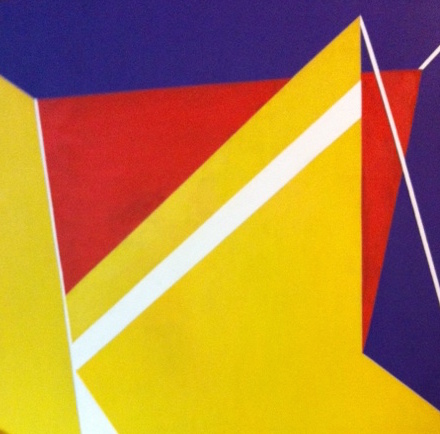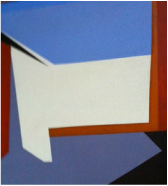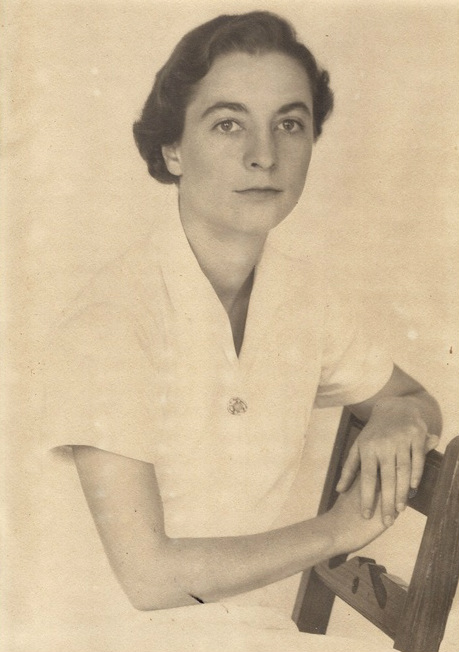Over the past three years, the historic, rare works of this pioneer female artist have become recognized by leading national curators:
“ . . . a remarkably sophisticated talent.” —Ilene Fort, Los Angeles County Museum of Art
“ . . . Lewis’s vision is celebratory and powerful.” —Erica Hirshler, Curator of American Paintings, Boston Museum of Fine Arts
“Lewis was one of the few artists in New England in the 1930’s to explore veristic surrealism, a form of surrealism in which each element of the composition is rendered in painstaking detail. She was also familiar with dream analysis and Andre Breton’s* declarations on ‘convulsive beauty.’” —Musée National des Beaux-Arts du Québec
*Ref: “I believe in the future resolution of these two states, dream and reality, which are seemingly so contradictory, into a kind of absolute reality, a surreality, if one may so speak.” ―André Breton, Manifestoes of Surrealism
“ . . . a remarkably sophisticated talent.” —Ilene Fort, Los Angeles County Museum of Art
“ . . . Lewis’s vision is celebratory and powerful.” —Erica Hirshler, Curator of American Paintings, Boston Museum of Fine Arts
“Lewis was one of the few artists in New England in the 1930’s to explore veristic surrealism, a form of surrealism in which each element of the composition is rendered in painstaking detail. She was also familiar with dream analysis and Andre Breton’s* declarations on ‘convulsive beauty.’” —Musée National des Beaux-Arts du Québec
*Ref: “I believe in the future resolution of these two states, dream and reality, which are seemingly so contradictory, into a kind of absolute reality, a surreality, if one may so speak.” ―André Breton, Manifestoes of Surrealism

"BLUE PRAYER" BY DORIS LINDO LEWIS, ABOUT 1930. $65,000. EXAMPLE OF VERY EARLY SURREAL PAINTING BY AN AMERICAN WOMAN. AN EXTRAORDINARILY EVOCATIVE OIL, FEATURING DISEMBODIED HANDS AND FEET, A GORGEOUS CHINESE BOWL CONTAINING BOTANICALLY CORRECT PITCHER PLANTS, BACKED BY A MYSTERIOUS FEATHER AND STRAP-HINGED DOOR PANEL. AN OUTSTANDING EXAMPLE OF LEWIS'S WORK.
NOTE: In addition to those pictured here, Lewis's remarkable paintings have been accessioned for
the permanent collections of the Boston Museum of Fine Arts, the Los Angeles County Museum of Art,
the National Gallery in Washington, D.C.. and the Provincetown Art Association and Museum
—as well as for such important private collections as the Horseman Collection.
This site and everything on it, copyright 2015 by J. Denis Glover.
the permanent collections of the Boston Museum of Fine Arts, the Los Angeles County Museum of Art,
the National Gallery in Washington, D.C.. and the Provincetown Art Association and Museum
—as well as for such important private collections as the Horseman Collection.
This site and everything on it, copyright 2015 by J. Denis Glover.
 "EDEN" BY DORIS LINDO LEWIS, WITH BOTANICALLY CORRECT IMAGES. EARLY 1930'S. SCALLOP SHELL IN SEVERAL PAINTINGS SYMBOLIZES THE FEMALE CREATIVE PRINCIPLE, AS THE ICONIC SYMBOL HAS IN ARTISTIC HISTORY GOING BACK TO THE RENAISSANCE. $65,000.
"EDEN" BY DORIS LINDO LEWIS, WITH BOTANICALLY CORRECT IMAGES. EARLY 1930'S. SCALLOP SHELL IN SEVERAL PAINTINGS SYMBOLIZES THE FEMALE CREATIVE PRINCIPLE, AS THE ICONIC SYMBOL HAS IN ARTISTIC HISTORY GOING BACK TO THE RENAISSANCE. $65,000.
 "THE EVENING AND THE MORNING WERE THE FIRST DAY" BY DORIS LINDO LEWIS. EARLY 1930'S. INSPIRED BY SISTINE CHAPEL CEILING TO INDICATE THAT GOD WAS NOT JUST A MASCULINE GOD, WHO CREATED MUSCULAR MEN, BUT ALSO A FEMININE GOD, WHO CREATED THE "ORDINARY" THINGS OF NATURE. SHELL AGAIN SYMBOLIZES THE FEMALE CREATIVE PRINCIPLE. $75,000, the pair.
"THE EVENING AND THE MORNING WERE THE FIRST DAY" BY DORIS LINDO LEWIS. EARLY 1930'S. INSPIRED BY SISTINE CHAPEL CEILING TO INDICATE THAT GOD WAS NOT JUST A MASCULINE GOD, WHO CREATED MUSCULAR MEN, BUT ALSO A FEMININE GOD, WHO CREATED THE "ORDINARY" THINGS OF NATURE. SHELL AGAIN SYMBOLIZES THE FEMALE CREATIVE PRINCIPLE. $75,000, the pair.
 "RETURN TO THE WOMB" BY DORIS LINDO LEWIS. EARLY 1930'S. TITLE CONFIRMED IN LOVE LETTER TO HER FROM NOVELIST MALCOLM LOWRY. $55,000. THIS IS THE ONLY OVERTLY FREUDIAN PAINTING BY LEWIS, INFLUENCED BY INFORMAL CONTACTS WITH THE HARVARD UNIVERSITY PSYCHOLOGY DEPARTMENT AND BY WRITINGS OF ANDRÉ BRETON, FOUNDER OF SURREALISM.
"RETURN TO THE WOMB" BY DORIS LINDO LEWIS. EARLY 1930'S. TITLE CONFIRMED IN LOVE LETTER TO HER FROM NOVELIST MALCOLM LOWRY. $55,000. THIS IS THE ONLY OVERTLY FREUDIAN PAINTING BY LEWIS, INFLUENCED BY INFORMAL CONTACTS WITH THE HARVARD UNIVERSITY PSYCHOLOGY DEPARTMENT AND BY WRITINGS OF ANDRÉ BRETON, FOUNDER OF SURREALISM.
 "SELF-PORTRAIT WITH ALICE AND THE LOOKING GLASS" BY DORIS LINDO LEWIS. EARLY 1930'S. $55,000.
NOTE THAT IT IS NOT OF ALICE,
BUT OF THE MECHANICAL BIRD.
"SELF-PORTRAIT WITH ALICE AND THE LOOKING GLASS" BY DORIS LINDO LEWIS. EARLY 1930'S. $55,000.
NOTE THAT IT IS NOT OF ALICE,
BUT OF THE MECHANICAL BIRD.
 "INTRUDER' BY DORIS LINDO LEWIS. EARLY 1930'S. INTERESTING PERSPECTIVE ANGLE WITH WHALE VERTABRA, DRIED(?) FLOWERS, AND TEMPESTUOUS SKY, INTRUDED UPON BY LARGE MENACING CICADA. $45,000.
"INTRUDER' BY DORIS LINDO LEWIS. EARLY 1930'S. INTERESTING PERSPECTIVE ANGLE WITH WHALE VERTABRA, DRIED(?) FLOWERS, AND TEMPESTUOUS SKY, INTRUDED UPON BY LARGE MENACING CICADA. $45,000.














